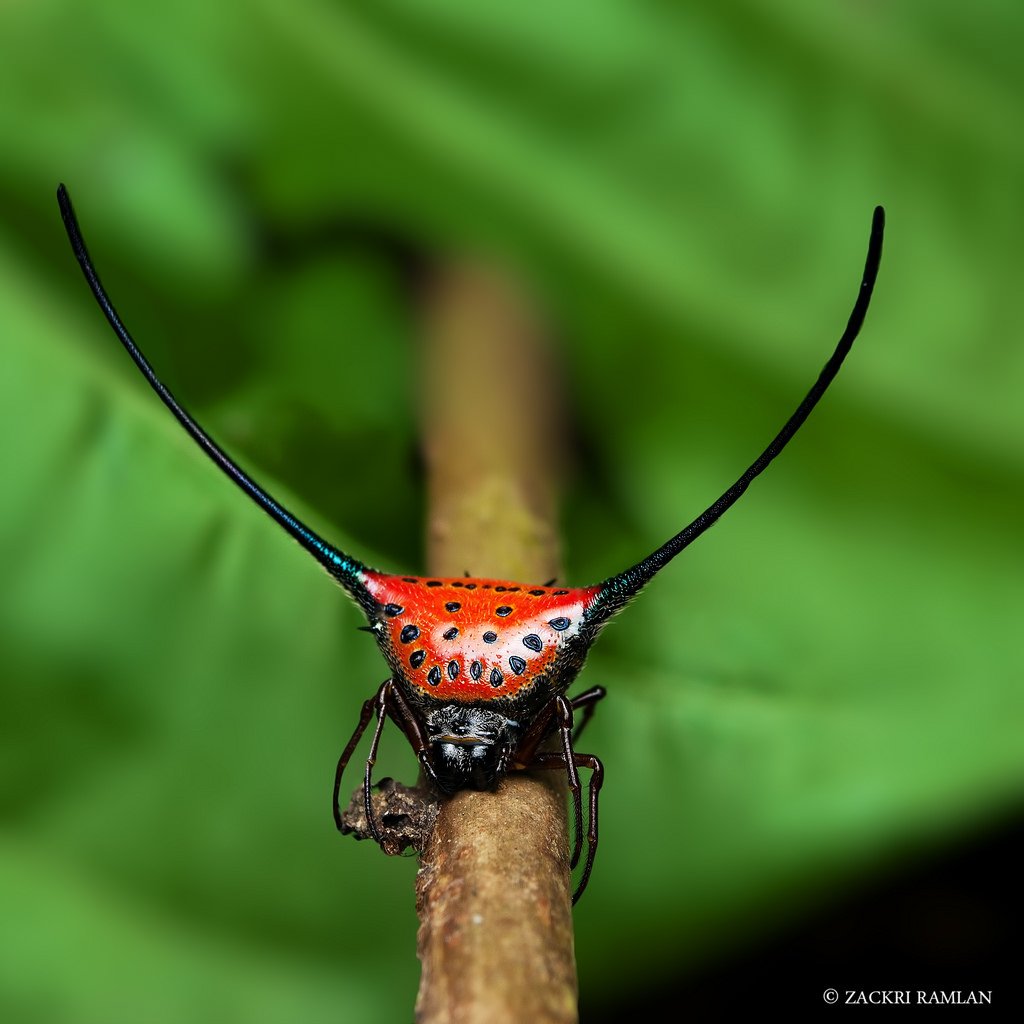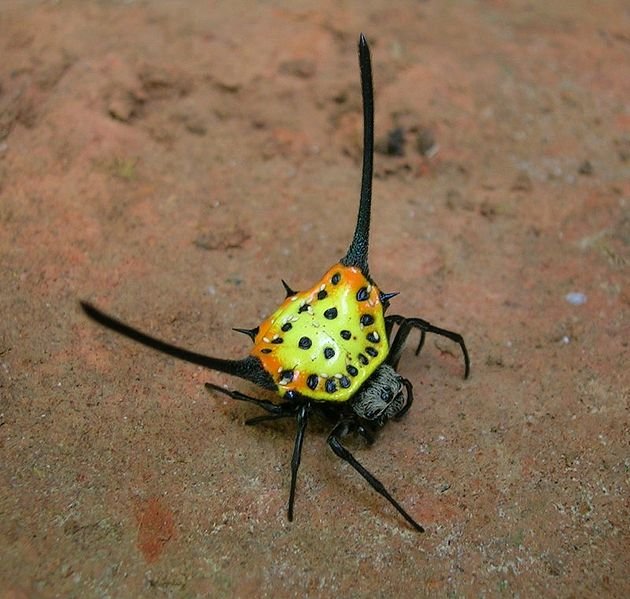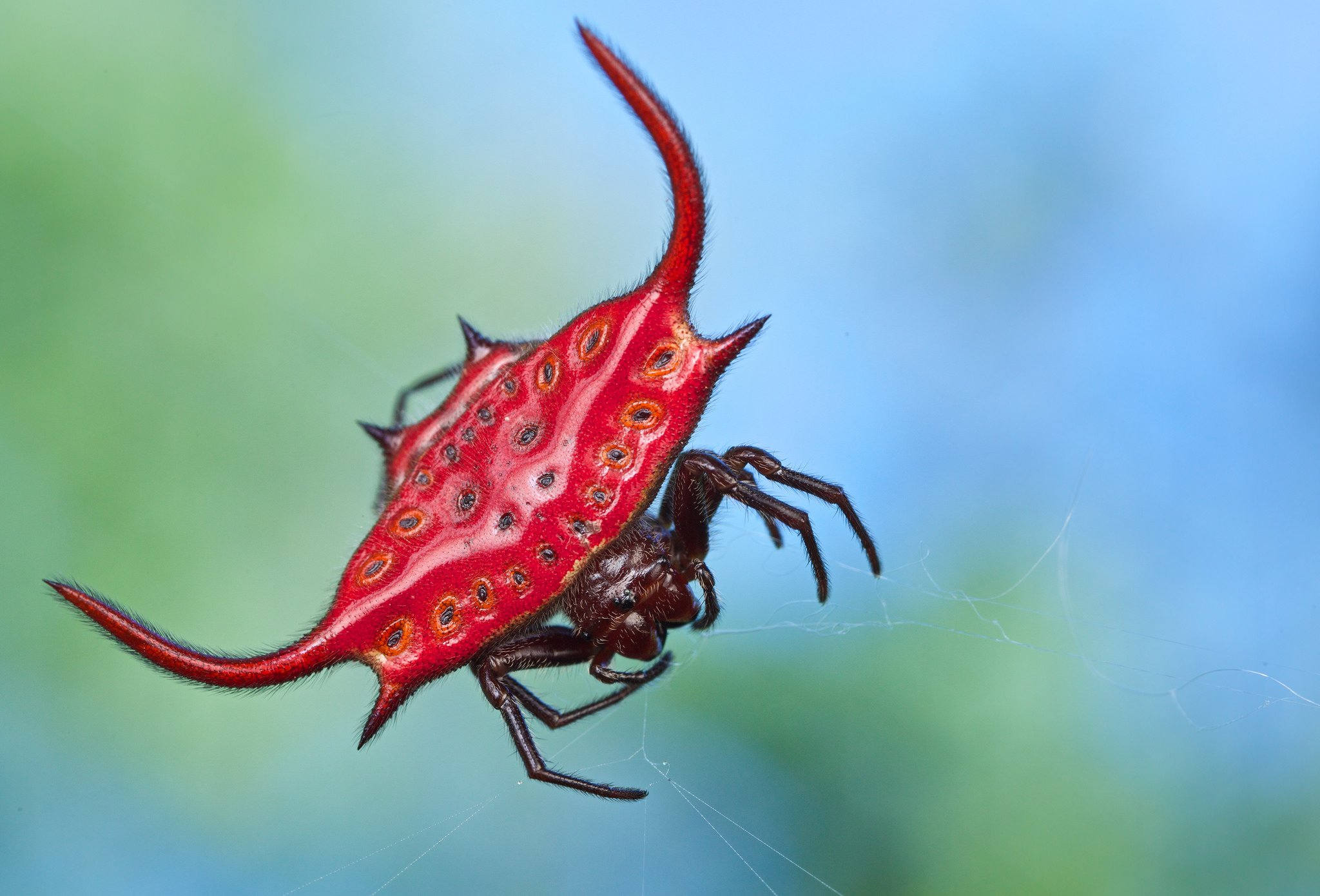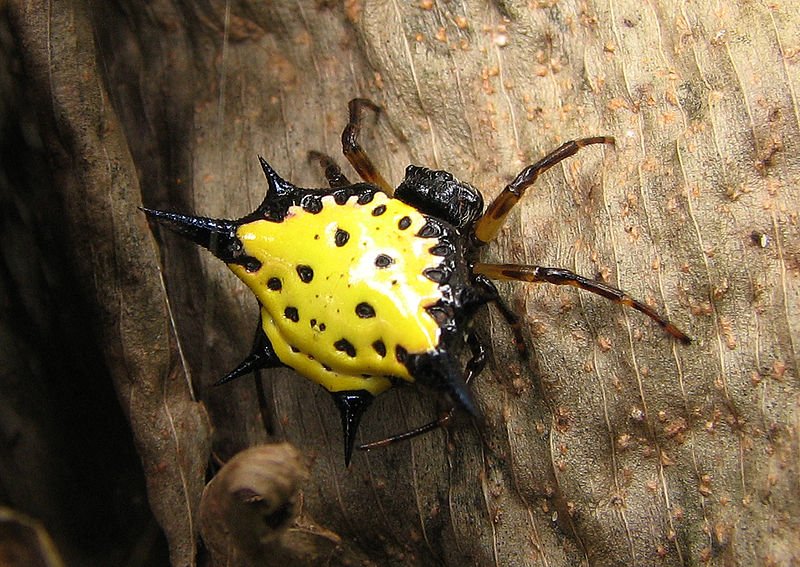Today I would like to introduce you (and especially my friend @abigail-dantes who loves spiders!) to one of my favorite genus of spiders, Gasteracantha. These spiders are small, usually no bigger than 3 cm in diameter and they are best known for their alien-like, spiky appearance. Here, have a look:

G. falcicornis (Credit)
Gasteracantha spiders are commonly known as spiny-backed orb-weavers, due to the prominent spines on their abdomen. The genus name "Gasteracantha" is a combination of the Greek words γαστήρ which means belly and άκανθα which means thorns.
As you are about to see, there is great variety between species. Some have huge horns, some are covered with tiny spikes, some are dark, some are colorful but they all are quite freaky! Having said that, their looks are deceptive. These little guys are totally harmless and they do not sting. However, their spikes can puncture you but they are not poisonous or something, just painful. Be careful if you ever see one!
So, let's see some representatives of the group:
1# Gasteracantha arcuata & G. dalyi (Spiders From Hell!)
 (credit)
(credit)
Commonly known as the curved spiny spider, G. arcuata has two prominent spikes, several times longer than its body. This species occurs in Singapore, East Malaysia, Indonesia, Thailand , Myanmar, Sri Lanka and India. Here's another photo, just look at these big horns:

(credit)
And here's a photo of gasteracantha dalyi, commonly known as the long horn spider, a similarly looking species from India:

(credit)
2# Gasteracantha falcicornis

(credit)
This species occurs in eastern and southern Africa and is commonly known as the Devil's Crab Orbweaver. As you can see, these guys have a long, curved black horn at each side and two shorter, straight horns at the front and rear.
Here's a photo showing the horns from a different angle:
 (credit)
(credit)
3# Gasteracantha versicolor
 (credit)
(credit)
Commonly known as the long-winged kite spider, G.versicolor has a wide distribution, ranging from central, east and southern Africa to Madagascar.Again a very small species, about 1 cm long. Here's another specimen:
4# Gasteracantha cancriformis

(credit)
Commonly known as the star spider, since it looks like a star, this is probably the best known and most studied Gasteracantha species.
It is widely distributed in the Americas and can mainly be found in woodland edges and shrubby gardens. It has also been sighted in the Whitsunday Islands, Australia, South Africa and Palawan, Philippines, as well as Kauai in the Hawaiian Islands, the Antilles and Koh Chang in Thailand eastern seaboard.
Have a look at this video, it's so damn cool. I wish I could get my hands on one:
5# Gasteracantha geminata

This little guy is commonly known as the oriental spiny orb-weaver. It's also comes by as the spiny-backed orb-weaver, due to the prominent spines on the abdomen and occurs in India and Sri Lanka.
6# Gasteracantha curvispina

(credit)
This hellish creature is a common sighting in many parts of West Africa, like Guinea Bissau, Liberia , Ghana, Togo and other places. I think it's my favorite :)
7# Gasteracantha hasselti
 (credit)
(credit)
Commonly known as Hasselt's spiny spider, this species is native to Asia, occurring from India eastwards to Indonesia. Here's a photo from another angle, it looks like a tiny weird spaceship, doesn't it:
 (credit)
(credit)
The End
So this is it for today! Which one do you think is the freakiest one? Let me know in the comments below!
More Strange Animals
Here are some more strange animals if you didn't have enough for today:
- 7 Horrifying Micro-Monsters That Will Haunt Your Dreams
- Greta oto: The Butterfly With The Transparent Wings
- 3 Unbelievable Examples Of Extreme Sexual Dimorphism
- Pseudis paradoxa: The Frog That Grows Down Instead Of Up ?!
- This Alien-like Worm Will Freak You Out!
- Cymothoa exigua: The Parasite That Turns Into A Tongue ?!?!
References & Further Reading
- Wikipedia.org/wiki/Spiny_orb-weaver
- Wikipedia.org/wiki/Gasteracantha_cancriformis
- Habitatnews.nus.edu.sg
- Wikipedia.org/wiki/Macracantha_arcuata
- Wikipedia.org/wiki/Gasteracantha_falcicornis
- Wikipedia.org/wiki/Gasteracantha_versicolor
- Wikipedia.org/wiki/Gasteracantha_geminata
- Wikipedia.org/wiki/Gasteracantha_curvispina
- Wikipedia.org/wiki/Gasteracantha_hasselti
- Wikipedia.org/wiki/Gasteracantha_hasselti
 Steemstem & SteemitEducation
Steemstem & SteemitEducation
Steemstem is the go-to place for science on Steemit. Check it out at @steemstem or visit the #steemSTEM channel. A big thank you also goes to the guys from @steemiteducation for supporting my content!
Greek Community
A final big thanks goes to my fellow greeks for their support and love. Follow the greek-trail or check the facebook page for more greek content!



